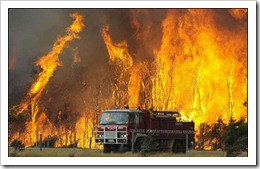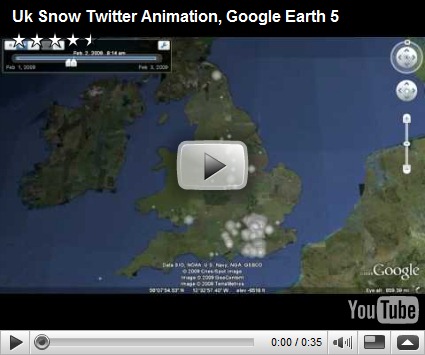Twitter usage in emergency situations
The BBC website has an article ‘Twitter to give bushfire alerts’ where it explains that after this years tragic bushfires in Victoria, the State will use Twitter in future to keep people up to date.
 I think that Twitter can be a huge help in these situations. The technical issue you have in situations like the Victoria bushfires is one of scale. As hundreds of thousands of people hit your website from around the world, the ability to scale out the hardware to cope with the load is just not possible. A site that is probably running on a couple of servers will soon become swamped in that situation. Sites like Twitter or Facebook however run at such a huge capacity already, that the increase of that size can be coped with, and they have the dynamic infrastructure to add servers rapidly if needed.
I think that Twitter can be a huge help in these situations. The technical issue you have in situations like the Victoria bushfires is one of scale. As hundreds of thousands of people hit your website from around the world, the ability to scale out the hardware to cope with the load is just not possible. A site that is probably running on a couple of servers will soon become swamped in that situation. Sites like Twitter or Facebook however run at such a huge capacity already, that the increase of that size can be coped with, and they have the dynamic infrastructure to add servers rapidly if needed.
The other issues is the scalability of gathering and pushing out of data. If you rely on ‘official’ sources (ie Fire, Police etc) then you will never get the full picture. If citizens can report fires, whoever is receiving those calls and emails will soon become overloaded. In a fast moving emergency situation you will never be able to keep up with demand.
So this is where Twitter and social computing comes in. The are designed to allow community participation, they can scale massively and also they can often receive data from many different sources – ie SMS, Mobile Phones, PC’s.
The other advantage is that if people enter in the data in a structured format, you can start to mine that data. Last winter there was significant snowfall across the UK, and being the UK that means that the country grinds to a halt. Using twitter, and a defined format of the hashtag #uksnow then the first part of the postcode and x/10 to rate how bad the snow was. So for example mine would have been
#uksnow OX4 7/10
Now we have data coming in, in a format that we can mine you can do something about it. There were a number of sites at the time that gave mashups of the data, so you could see how badly places were hit. After the event, someone also created a time-lapse video to show how the snow spread across the country.
Comments
Anonymous
July 07, 2009
I think radio and TV are more efficient in spreading emergency news then twitter or facebook.Anonymous
July 07, 2009
TV and Radio are not going anywhere in spreading emergency news and Twitter will not replace it; but the issue comes with the speed at which those mediums work. With something that moves as fast as a bushfire, how do the TV and radio stations gather that information and spread it back out. In the case of the Victoria Bushfires even the media itself started to rely on Twitter to get information (http://www.theage.com.au/news/technology/web/social-media-lights-up-as-bushfires-rage/2009/02/09/1234027910408.html?page=fullpage#contentSwap1) and I also read (now cannot find) that the emergency services used it as well as it gave them more up-to-date information of where the fires were breaking out that the official channels.
